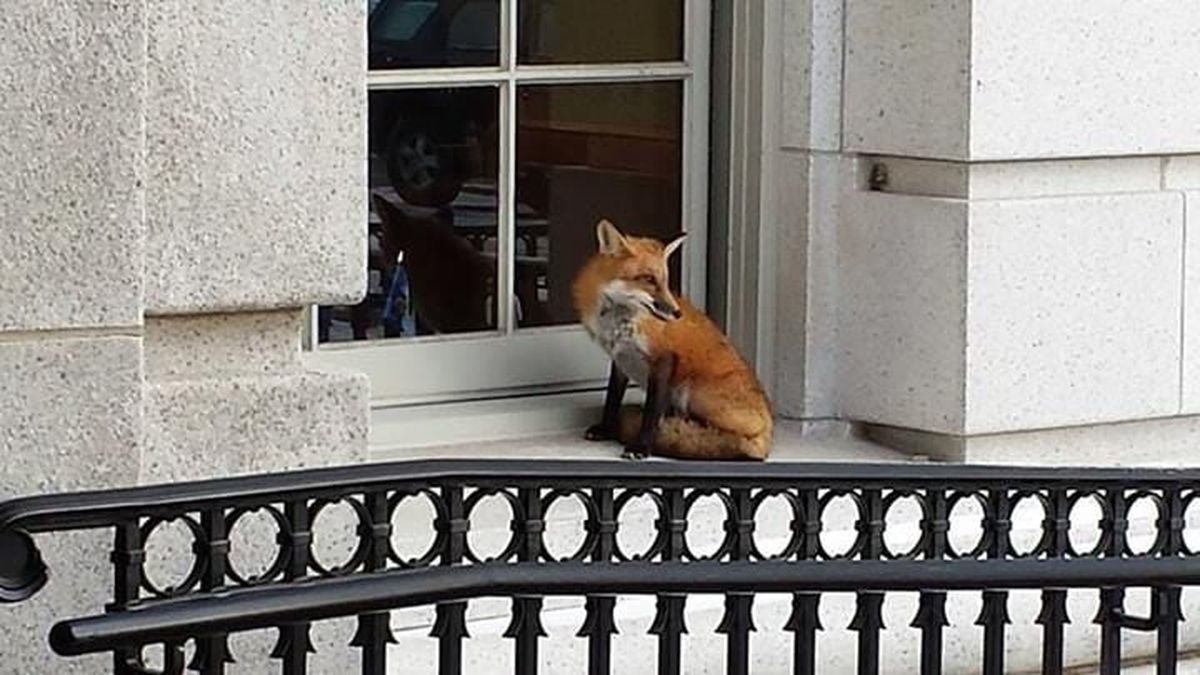Cool Critters: Outfoxed? How red foxes are living among us in our towns and cities

Does the idea of a red fox sharing our sidewalks and sheltering under porches and decks surprise you?
Then be surprised, because the diminutive animal with reddish fur, pointy ears and a long bushy tail tipped with white is increasingly thriving in towns and cities.
Red foxes, scientifically known as Vulpes vulpes, live in urban areas throughout the United States, including here in the Inland Northwest. Researchers began documenting the influx a decade or so ago.
And while it’s not known how many red foxes live in the Spokane area, “it’s clear that they are adapting to life in urban environments in Eastern Washington and elsewhere,” district wildlife biologist Mark Vekasy of the Washington State Department of Fish and Wildlife said.
If you didn’t have a clue, you’re not alone. After all, the red fox is crafty to the point of near invisibility. Living up to its reputation as being “sly like a fox,” the creature has managed to quietly expand its range despite centuries of fur-trapping, sport hunting and loss of natural habitat.
“They are much more prevalent than people realize,” wildlife ecology researcher David Drake of the University of Wisconsin-Madison said. As director of the university’s Urban Canid Project, Drake began studying the red fox in 2014 and is among the early researchers to document the animal’s expansion into U.S. urban settings.
“It is very adaptable,” Drake said, adding that the red fox is the most widely distributed wild carnivore in the world. In Madison, the capital of Wisconsin and home to more than 280,000 residents, the red fox has been spotted everywhere from city streets and parks to the university’s football stadium and a Capitol building windowsill.
Here in the Inland Northwest, their urban presence appears to be a recent phenomenon. Eight years ago, when a colleague at Washington State University told wildlife ecologist Rod Sayler about a red fox hanging around his backyard in Pullman, “I was shocked,” Sayler said.
After all, Sayler, a seasoned wildlife scientist who also lived in Pullman, had never observed a red fox or even heard of one being in town. He reasoned that the absence of foxes was likely because “coyotes are abundant in and around Pullman,” and the larger, stronger coyote traditionally runs foxes off or kills them, as competitors for food sources, he explained.
Sayler suspected the fox’s Pullman appearance was an aberration, until a few years ago, when he started getting more reports of red fox sightings in the area.
“Then one day last year, I watched a red fox go through our backyard in Pullman, making rounds through yards in the neighborhood,” he said.
What’s more, users of the online social medial network iNaturalist have posted red fox sightings in or around Walla Walla, Yakima and Spokane – all places where coyotes live or hunt as they pass through.
If coyotes and red foxes are historically enemies, what’s going on?
Possibly the same phenomenon that Drake and his colleagues discovered in Madison: Drawn to the city by an abundance of food sources, the red fox and the coyote are learning to get along.
“The science suggests that, unlike in rural areas, the two canids are coexisting in urban environments,” said Drake, who, with his Canid Project team published a widely publicized study in the journal PLOS One in 2018. During a two-year period, radio-collared red foxes and coyotes were observed coming into close contact with each other. There were even instances of the two species foraging for food at only 300 feet apart with no conflict.
“We think the antagonistic relationship between these two predators is breaking down in the urban environment because food is so abundant that they don’t have to compete,” Drake said. Urban areas provide a bounty of food options – from rats, mice, squirrels and rabbits to berries, human food scraps and pet food, he added.
Which doesn’t mean you’re likely to see a fox and coyote making nice in your backyard or school playground. While their urban territories can overlap, foxes are more likely to live and hunt in neighborhoods, while coyotes stick to green spaces such as arboretums, large parks and woodland edges, Drake said.
With more research, Drake aims to better understand how the two species interact with one another – and with humans. Considering an estimated 80% of the U.S. population lives in urban areas, “it behooves us to better understand the animals sharing space with us,” he said.
So if someone tells you about a red fox trotting down a sidewalk in Spokane or elsewhere in the Inland Northwest, don’t accuse them of crying wolf.